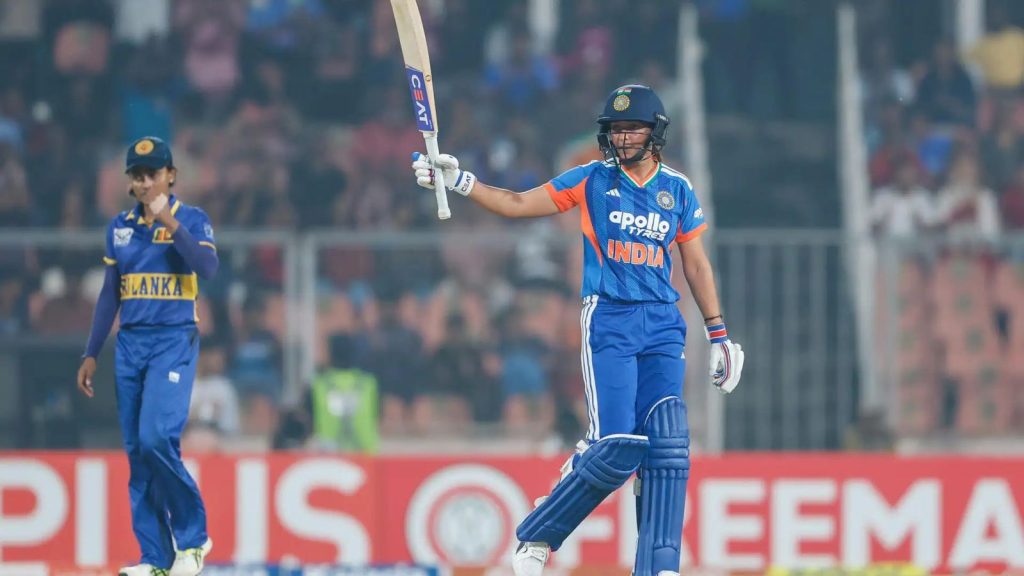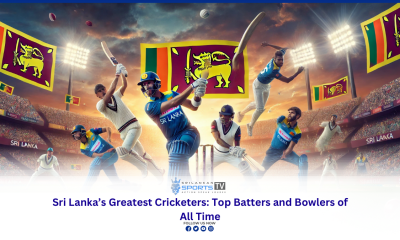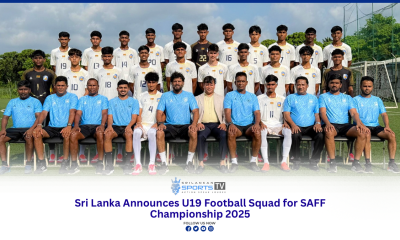News
Oldest Sports in the World
Ever wondered which sport is the oldest in whole human history ? We dig deep and managed to the top 10 sports which are officially the oldest sports in the world.
#1. Wrestling
Just like prostitution is the oldest profession, Wrestling is widely considered the oldest sport in the world. Wrestling infects is the documented evidence unlike some of the other oldest sports listed on this page. Here are some details about the history of Wrestling.

- A “fragment of papyrus” which reportedly dates back between 100 and 200 A.D has the instructions about how to wrestle. The text is in the greek language and the word “pleckson” is used several times which is translated to “fight it out” in English. The document was discovered back in the 1800s in Egypt.
- That is not the only document evidence, there have been many dates back to different times but the one mentioned above is certainly the oldest ever found. So there is little doubt that Wresting is certainly the oldest sport known to man.
- It has evolved over the centuries of course and it was part of the Olympics as the first set of sports in the era between 800 to 1200 BC. P
- While Professional wrestling circuits were first introduced in Paris, France in the 1830s.
- Today Wrestling is not only an Olympic sport but a full-fledged professional career and widely regarded as one of the most popular and top sports in the world.
#2. Running & Long Jump

Running is the World’s most accessible sport and it always has been even now. Running universal human physical expression and it should not come as surprise that along with wrestling Running is the oldest sport. Here are some points about running as a sport.

- Running was the only sport in the first-ever recorded Olympics held in Athens back in 776 BCE.
- While competitive running was in modern times is recorded back to 1829 BCE.
- Running as a sport as many disciplines in the Olympics, with slightly different requirements such as marathon, sprint, long jumping and hurdling, etc
#3. Javelin & Discuss Throw

A very interesting sport that is still very popular in the modern Olympics, Javelin Throwing is a track and field sport and it dates back to the ancient Olympics in 708 bc. Here are details about the historic transition of the sport to modern Javelin throwing.
- A couple of disciplines likes distance and target throw were part of the sport in the artifacts found which dates back to ancient Olympics in the era of 708s.
- In the 1870s Poles used as Javelin now were introduced in Germany and Sweden and by the next decade, it became a yearly national event in Sweden and Finland. no wonder 50% of the medals awarded in modern Olympics to date went to athletes from Scandinavian countries like Denmark, Sweden, Finland, and Norway.
- In the 1890s some rule changes were introduced like limited run-ups before throwing instead of standing throws.
- It was introduced in the modern Olympics in 1906 while for women it was introduced in the 1932 Olympics.
#4. Polo

Polo is a team game which is played on horses. It’s a bit like Hockey the difference of course being played on horses back where both teams try to outscore each other by putting “small wooden ball” in the goal.
Polo origins date back to the peak of the Persian empire in central Asia it is believed that Persian emperors used to learn horse riding at a very early age and used to play a sport that would later go on to be known as Polo.
316 AD is the documented evidence about sport like Polo in the Persian empire. While the modern game with rules and regulations was developed in India during the time of the British empire and the first Polo club dates back to 1833 in India.
#5. Boxing

Boxing is a combat sport and one of the most popular combat sport in the world. It has a long and illustrious history in modern times. While historically speaking “fist fightïng” as a sport has evidence from 2nd and 3rd Millenium BC but the fist fighting with hand protection is believed to be in existence from 900 bc to 1500 bc. Romans also had Boxing sport with leather thong wrapped around the hands but in Roman-era boxing was more of a fight till death so strange to call it a sport.
While fist fighting as a sport with rules and regulations can be found in England with “bare-knuckle fighting” in 1681. Boxing’s first rules dates back to 1743 with introduction of 30 second count, no hitting while opponent is down etc.
But from 17th to 18th century fist fighting or boxing sort sport were widely considered illegitimate and there werent many rulings. Amature boxing was introduce in Olympics in 1908, that kind gave new life to boxing with weigh-division rules coming into play at the same time.
So with young boxers fighting in amateur events and Olympics, they would go down to become professional fighters later in their careers ultimately developing better skills of boxing helping to improve the standard. Now boxing is one of the most popular sports in the world.
#6. Gymnastic

Gymnastic is originated from ancient greek and at the beginning, it was a set of training methods deployed for military training but as a sport, its history is not much known from ancient times.
As far as modern Gymnastics is concerned it dates back to the late 18th century when two physical educators from Germany developed and exercise from boys using “apparatus” it would later go on to become a sporting event quickly spread across Europe and then the world.
The international federation for Gymnastic was established in 1891 while it was introduced as a sport with several events for both men and women in 1896.
#7. Football/Soccer

Football sort sports have been played since early centuries from 200 to 300 bc according to FIFA FIFA (The world governing body of football). In medieval times loads of games involving “Ball” were played around Europe and some of them were pretty much like football. A game called “mob football” was played in England in the 10th century but the number of players included was unlimited. Football sort sport was continued to be played around Europe and especially in England and that is where the modern rules/codes were formed when football was played in the schools in England.
The Sheffield FC is the oldest professional football club which was formed in 1857 and soon after that football modern rules were introduced and the first professional cup competition now known as FA Cup started.
#9. Hurling

Hurling has been played in Ireland for over 3000 years making it one of the oldest sport in the world. It is a team game which is played with a stick called “Hurley” and the ball “sliotar”. The objective is to score goals into the opposing goalposts with the use of the stick. Unlike some of the other sport listed here, Hurling has a documented history and it is very popular in Ireland.
#10. Field Hockey

A game pretty similar to field hockey can be traced back to ancient greek were some of the graphics discovered show paintings of people playing some sport with a curved stick/Horne and ball. The modern hockey rules were invented in England by the Middlesex cricket club in the last 19th century and it spread to British colonies In Australia, Africa, and the sub-continent. International hockey federations were established and hockey was included in the Olympics in 1908.
Cricket
Sri Lanka Announce Dasun Shanaka-Led Squad for Pakistan T20 Series
Sri Lanka have announced a strong and well-balanced squad led by Dasun Shanaka for the upcoming three-match T20 International series against Pakistan, which is set to begin tomorrow in Dambulla.
The selection reflects a blend of experience and emerging talent, as the selectors look to combine stability with attacking intent in the shortest format. Shanaka will continue to lead the side, with his leadership, calm decision-making, and power-hitting expected to play a central role in Sri Lanka’s campaign.
The batting unit features depth and versatility. Pathum Nissanka and Kamil Mishara provide options at the top of the order, while Kusal Mendis and Kusal Perera bring proven international experience and match-winning ability to the middle order. Dhananjaya de Silva and Charith Asalanka add further flexibility, offering the ability to adapt their roles according to match situations.
Sri Lanka’s all-round strength remains a key asset, with Wanindu Hasaranga, Kamindu Mendis, Dunith Wellalage, and Shanaka himself providing balance to the side. Hasaranga, in particular, is expected to play a decisive role with both bat and ball, especially during the middle overs.
The bowling attack offers a strong mix of spin and pace. Maheesh Theekshana’s variations will be vital on home surfaces, supported by Dushan Hemantha and Wellalage. The pace department is bolstered by the presence of Dushmantha Chameera, Matheesha Pathirana, Nuwan Thushara, Eshan Malinga, and Traveen Mathew, giving Sri Lanka a range of options in terms of speed, movement, and death-over execution.
Janith Liyanage provides additional batting cover, while the overall squad depth allows the team flexibility to rotate players and manage workloads across the series.
With home advantage on their side, Sri Lanka will be aiming to make a strong start and build momentum against a competitive Pakistan side as preparations continue for future international assignments.
Sri Lanka T20 Squad vs Pakistan
Pathum Nissanka, Kamil Mishara, Kusal Mendis, Kusal Perera, Dhananjaya de Silva, Charith Asalanka, Dasun Shanaka (Captain), Janith Liyanage, Kamindu Mendis, Wanindu Hasaranga, Dunith Wellalage, Maheesh Theekshana, Dushan Hemantha, Traveen Mathew, Dushmantha Chameera, Matheesha Pathirana, Nuwan Thushara, Eshan Maling
Cricket
Sanath Jayasuriya to Step Down as Sri Lanka Head Coach After T20 World Cup 2026
Sri Lanka head coach Sanath Jayasuriya has confirmed that he will step down from his role following the ICC Men’s T20 World Cup 2026, bringing clarity to ongoing speculation surrounding his future with the national team.
Although Jayasuriya’s current contract with Sri Lanka Cricket (SLC) extends beyond the World Cup, multiple media reports indicate that he has already taken a personal decision not to continue in the role after the tournament.
Coaching Journey and Key Milestones
Jayasuriya’s tenure as national head coach began in July 2024, when he was appointed interim head coach ahead of a demanding home series against India. That appointment proved pivotal, as Sri Lanka went on to record a historic ODI series victory over India, their first in several decades. The result prompted Sri Lanka Cricket to confirm Jayasuriya as full-time head coach later that year.
Prior to taking over the national side, Jayasuriya had been involved with Sri Lanka Cricket as a consultant at the National High Performance Centre since December 2023, contributing to player development and long-term planning.
Record and Performance Overview
Under Jayasuriya’s leadership, Sri Lanka have played 60 international matches across all three formats, registering 29 wins and 29 losses, with two no results. The numbers reflect a transitional phase for the team, marked by rebuilding, experimentation, and gradual progress rather than consistent dominance.
While the team has shown improvement in Tests and ODIs, Jayasuriya has acknowledged that T20 cricket remains an area requiring further refinement, particularly in maintaining batting momentum and executing disciplined bowling during decisive phases of matches.
Focus on World Cup Preparation
Looking ahead, Jayasuriya has highlighted upcoming home series against Pakistan and England as crucial preparation opportunities ahead of the T20 World Cup. He believes these contests will allow Sri Lanka to finalise player combinations, sharpen tactical decision-making, and test performances under pressure in familiar conditions.
Jayasuriya’s connection with Sri Lanka’s World Cup success is deeply rooted. He was Player of the Tournament during Sri Lanka’s iconic 1996 ODI World Cup victory and later served as Chairman of Selectors when the national team lifted the 2014 T20 World Cup. Now, he is aiming to contribute to a potential third World Cup triumph, this time from the coach’s chair.
SLC Response and Future Outlook
Sri Lanka Cricket Chairman Shammi Silva has publicly expressed satisfaction with Jayasuriya’s work, praising his hands-on coaching approach and close engagement with players. Speaking at a recent media briefing, Silva stated that formal discussions regarding Jayasuriya’s future will take place after the T20 World Cup, leaving open the possibility of an extension should circumstances permit.
In a separate development, Silva also confirmed that Sri Lanka Cricket plans to appoint a foreign head coach for the national women’s team, marking a shift from the current setup under local coach Rumesh Ratnayake. The move forms part of a broader strategy to further professionalise and strengthen the women’s cricket programme.
As Sri Lanka build toward the 2026 T20 World Cup on home soil, Jayasuriya’s remaining tenure is expected to focus on consolidation, clarity, and competitive readiness — with his legacy to be assessed once the global tournament concludes.
Cricket
Harmanpreet Leads from the Front as India Women Seal 5–0 Clean Sweep Over Sri Lanka
India Women capped off a dominant tour with another composed performance, defeating Sri Lanka Women by 15 runs in the fifth and final T20I to complete a 5–0 clean sweep of the series. The result underlined India’s superiority throughout the tour, as they consistently controlled key phases of play and delivered under pressure.
Batting first, India Women posted an imposing 175 for 7 from their 20 overs. The innings was anchored by captain Harmanpreet Kaur, who led from the front with a commanding 68 off 43 balls. After early setbacks that saw Shafali Verma, Gunalan Kamalini and Harleen Deol depart inside the powerplay, India required stability — and Harmanpreet provided exactly that.

The skipper rotated the strike efficiently before accelerating with authority, striking nine boundaries and a six to maintain momentum. Support came in patches, with Amanjot Kaur contributing a useful 21, but it was the late surge that lifted India to a formidable total. Arundhati Reddy produced a stunning cameo, remaining unbeaten on 27 from just 11 deliveries, her clean striking in the death overs decisively shifting momentum in India’s favour.
Among the Sri Lankan bowlers, Kavisha Dilhari and Chamari Athapaththu were the standouts, claiming two wickets apiece, but the attack struggled to contain India in the closing stages.
Chasing 176, Sri Lanka Women responded with intent and determination. Hasini Perera starred at the top of the order with a fluent 65 off 42 balls, while Imesha Dulani compiled a composed 50, keeping the chase alive with a crucial partnership that threatened to tilt the contest.
India, however, showcased their experience and composure. Timely breakthroughs in the middle overs stalled Sri Lanka’s momentum, with Deepti Sharma, Sneh Rana, Vaishnavi Sharma and Shree Charani all making important contributions with the ball. Sharp fielding — highlighted by a crucial run-out — further tightened India’s grip on the match.
Despite a late push from Rashmika Sewwandi, Sri Lanka finished on 160 for 7, falling 15 runs short of the target.
The victory sealed a comprehensive 5–0 series whitewash for India Women, reflecting their consistency, squad depth, and tactical clarity throughout the series. Harmanpreet Kaur’s leadership and match-winning performance in the final game perfectly encapsulated India’s dominance as they closed the tour on a resounding high.
Brief Scores
India Women 175/7 in 20 overs
Harmanpreet Kaur 68 (43), Arundhati Reddy 27* (11)
Kavisha Dilhari 2/11, Chamari Athapaththu 2/21
Sri Lanka Women 160/7 in 20 overs
Hasini Perera 65 (42), Imesha Dulani 50 (39)
Deepti Sharma 1/28, Sneh Rana 1/3
-

 Football11 months ago
Football11 months agoSri Lanka Schools National Championship 2025: Super 8 Fixtures and Grouping
-

 News12 months ago
News12 months ago2025 Schools Rugby Season Set to Thrill Fans with Knockout and League Action
-

 Cricket7 months ago
Cricket7 months agoNuwan Thushara Shines as RCB Storms into IPL 2025 Final
-

 Live4 years ago
Live4 years agoLive Broadcast of Syria vs Sri Lanka | AFC U23 Asian Championship Qualification
-

 News8 months ago
News8 months agoMajor Shake-Up in Sports Governance: New 2025 Regulations Reform National Sports Bodies in Sri Lanka
-

 Football12 months ago
Football12 months agoFFSL Rebrands Division-1 as ‘League-One’ with a Bold New Vision
-

 Cricket12 months ago
Cricket12 months agoSri Lanka’s Greatest Cricketers: Top Batters and Bowlers of All Time
-

 Football8 months ago
Football8 months agoSri Lanka Announces U19 Football Squad for SAFF Championship 2025








You must be logged in to post a comment Login